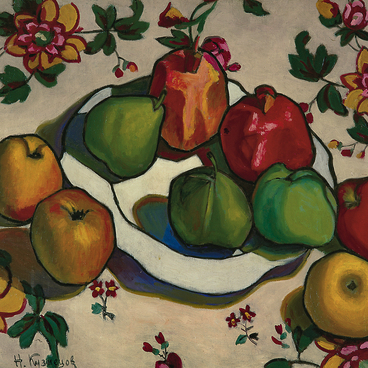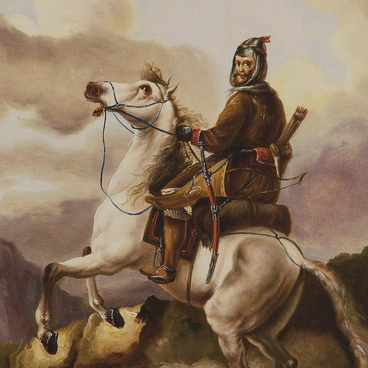This genre is called interior portrait, in which the subject of the image is the interior decoration of the premises: palace and manor chambers, village huts and craft workshops, simple rooms and sheds. The interior portrait, to a greater extent than still life, reveals a person’s life through the world of things, the furnishing. This genre was finally formed in the 17th century in Holland.
In Russia, the interest in interior painting fell on the second half of the 19th century as this was associated with the school of the artist Alexey Venetsianov. His realistic canvases with an attentive attitude to detail are a real encyclopedia of Russian everyday life.
The collection of the Chelyabinsk Museum of Fine Arts has the interior “Living Room. Maryino” by Russian artist Alexander Rubtsov.
Rubtsov was born on January 24, 1884, in St. Petersburg. In 1904, he graduated with honors from the 8th St. Petersburg gymnasium and entered the painting department of the Imperial Academy of Arts. In 1907, Rubtsov visited Venice, Vienna and Paris, where he attended the workshop of Auguste Rodin. In 1909, the artist spent the whole summer at the Maryino estate, a palace and park complex built in the classicism style.
The estate belonged to Sophia Stroganova. Her mother, Natalya Golitsyna, visited Maryino pretty often. According to one version, it was she who served as the prototype for the old woman from “The Queen of Spades” written by Alexander Pushkin. The interiors, that Alexander Rubtsov saw back then, retained the spirit of Russian noble estates of the early 19th century.
In 1910 and 1911, the artist traveled to Italy and Sicily. In November 1912, Rubtsov received the title of painting artist and a scholarship for four years of foreign practice in several countries of his choice. The artist went to Germany, then Switzerland, France, Spain, England and Morocco.
After the Bolshevik revolution, the artist did not return to Russia. Maryino became the state property, after many years nothing survived from the former glory of the estate. Nowadays, when the Golitsyn estate became private property, its English park was restored according to old watercolors of the 19th century, and the interiors of the living rooms could only be recreated thanks to Rubtsov’s paintings.
Most of the heritage of Alexander Rubtsov is stored in museums in France and Algeria.
In Russia, the interest in interior painting fell on the second half of the 19th century as this was associated with the school of the artist Alexey Venetsianov. His realistic canvases with an attentive attitude to detail are a real encyclopedia of Russian everyday life.
The collection of the Chelyabinsk Museum of Fine Arts has the interior “Living Room. Maryino” by Russian artist Alexander Rubtsov.
Rubtsov was born on January 24, 1884, in St. Petersburg. In 1904, he graduated with honors from the 8th St. Petersburg gymnasium and entered the painting department of the Imperial Academy of Arts. In 1907, Rubtsov visited Venice, Vienna and Paris, where he attended the workshop of Auguste Rodin. In 1909, the artist spent the whole summer at the Maryino estate, a palace and park complex built in the classicism style.
The estate belonged to Sophia Stroganova. Her mother, Natalya Golitsyna, visited Maryino pretty often. According to one version, it was she who served as the prototype for the old woman from “The Queen of Spades” written by Alexander Pushkin. The interiors, that Alexander Rubtsov saw back then, retained the spirit of Russian noble estates of the early 19th century.
In 1910 and 1911, the artist traveled to Italy and Sicily. In November 1912, Rubtsov received the title of painting artist and a scholarship for four years of foreign practice in several countries of his choice. The artist went to Germany, then Switzerland, France, Spain, England and Morocco.
After the Bolshevik revolution, the artist did not return to Russia. Maryino became the state property, after many years nothing survived from the former glory of the estate. Nowadays, when the Golitsyn estate became private property, its English park was restored according to old watercolors of the 19th century, and the interiors of the living rooms could only be recreated thanks to Rubtsov’s paintings.
Most of the heritage of Alexander Rubtsov is stored in museums in France and Algeria.




